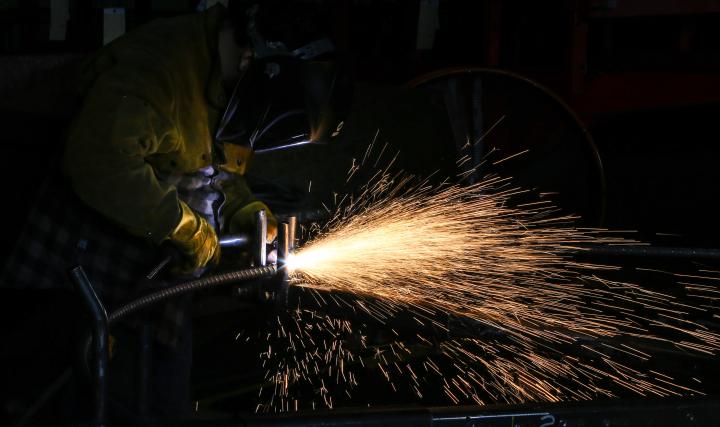Protect yourself from vision loss
A serious injury can significantly change a life and the respective income earning ability. There are several injuries that can greatly affect one in this manner. An individual can lose use of their fingers, hand, arm, feet, and legs as a result of a debilitating injury or an amputation. Artificial limbs and hands may allow one to function productively and resume a relatively rewarding lifestyle. The disability is significant and will require time, medical treatment, mental health counseling, and physiotherapy in order to resume a fulfilling and productive life.
The loss of or impairment of vision is more disabling because eyes cannot be replaced or corrected as with an artificial limb and is a sense that is difficult to function without. There are steps such as learning Braille and using a support dog that help but it is very challenging to do without the ability to see. Eye injuries are as equally prevalent at work and at home. According to the American Academy of Ophthalmology (AAO) 90 percent of injuries are preventable and 78 percent of injured were not wearing protective eyewear. As with work injuries, we will discuss ways to protect vision and prevent eye injuries and illnesses which need not occur off the job.
At home, people often do not consider protective eyewear - safety glasses, goggles, or a face shield when cooking, cleaning, doing home repair, working in the yard, or in the garage. That is despite the frequency of home related eye injuries.
Prevent Blindness America strongly supports the AAO and the American Society of Ocular Trauma (ASOT) in their recommendation that every household have at least one pair of American National Standards Institute (ANSI) approved eyewear. The eyewear should have the "Z-87" logo stamped on the frames (inside the temple) and can be purchased at hardware stores and home building centers.
Approximately 40 percent of home eye injuries occur in the yard or garden. Yard equipment including mower or power trimmer debris can impact the eye at a high rate of speed. Prevent Blindness America offers these tips on how to protect your eyes while doing work in the yard:
- When mowing, wear safety glasses with side protection or wraparound goggles. Check your yard and remove debris before mowing.
- When using a weed eater, wear safety glasses or goggles under a face shield.
- Wear goggles when working with power saws or trimmers.
- Turn off power tools when near an unprotected bystander, especially when young children approach. Bystanders and helpers need eye protection when around tools that are in use.
- Wear goggles to protect your eyes from fertilizers, pesticides and other yard and home chemicals, including lime dust, bleach and other household cleaning products.
- Read and follow all product instructions. Obey warnings on yard chemicals and equipment.
- In cold weather while using snow blower and shoveling snow safety glasses can protect eyes from blowing snow and wind.
- Approved safety glasses can be purchased with ultraviolet radiation protection
- Also, after any project, make sure hands are washed thoroughly before touching the eyes or face.
One other risk is Computer Vision Syndrome, also known as Digital Eye Strain, which refers to a group of eye and vision-related effects that result from extended computer, tablet, e-reader and cell phone use. An American worker, on average, spends seven hours a day on the computer either in the office or working from home. To help resolve digital eye strain, the 20-20-20 Rule is recommended; take a 20-second break to view something 20 feet away every 20 minutes.
Lastly, when protecting vision, one needs to consider ultraviolet radiation. Sunscreen is used to protect our skin by everyone, but one must remember to protect our vision as well from ultraviolet light. According to the AAO studies show that exposure to sunlight may increase the risk of developing cataracts and growths on the eye, including cancer. This risk applies when using tanning beds, so indoor UV light as well needs to be accounted for when protecting the eyes. Sunlight reflected off sand and water can cause photokeratitis, the condition responsible for snow blindness, this applies to anyone who frequents the beach and swimming pools.
According to Michael Kutryb, MD, an ophthalmologist in Edgewater, Fla., and clinical correspondent for the AAO, "UV radiation, whether from natural sunlight or indoor artificial rays, can damage the eye's surface tissues as well as the cornea and lens," said. "Unfortunately, many people are unaware of the dangers UV light can pose. By wearing UV-blocking sunglasses, you can enjoy year round leisure and work activities safely while lowering your risk for potentially blinding eye diseases and tumors." It is important to start wearing proper eye protection at an early age to protect your eyes from years of ultraviolet exposure. Children are more sensitive to UV because of their developing physiology and cumulative effect of radiation. Remember that sunlight is strongest mid-day to early afternoon, at higher altitudes, and when reflected off water, ice or snow. Wraparound glasses are the best protection from side and reflective UV radiation. Use only glasses that block both UV-A and UV-B rays and that are labeled either UV400 or 100% UV protection.
Our vision is an irreplaceable gift that we all need for a productive and enjoyable life. We can keep and maintain our vision by protecting it and preventing exposure to physical, chemical and radiation hazards from an early age and throughout our lives while at work or at home.
